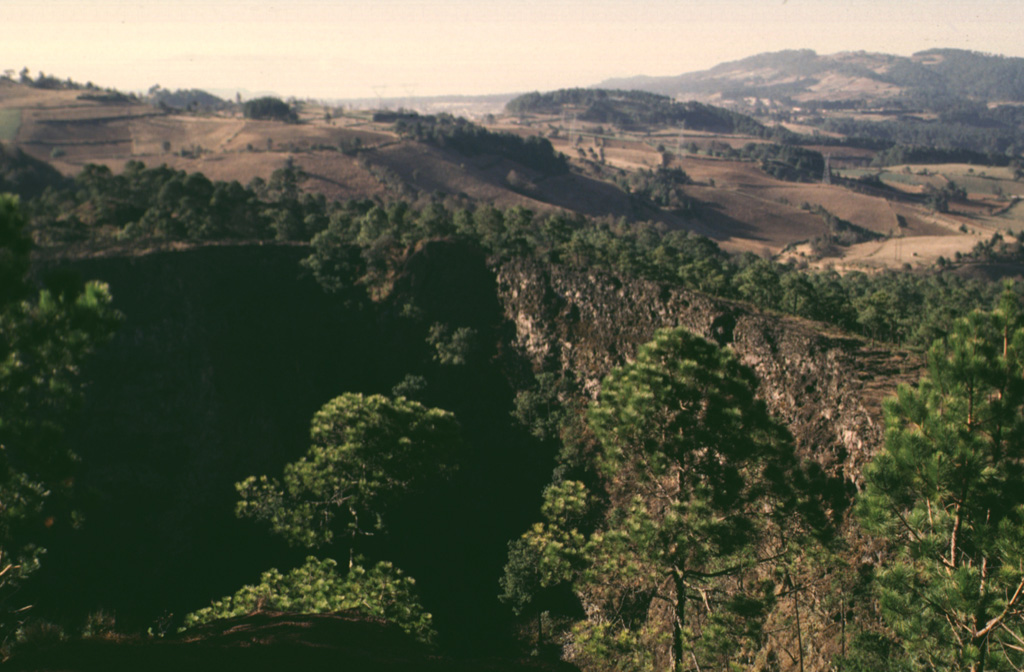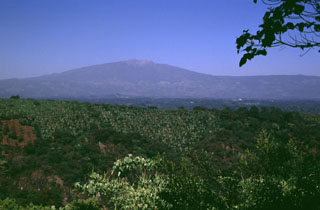Global Volcanism Program | Image GVP-07693

The steep-walled 200-m-wide crater in the foreground at El Volcancillo on the NE flank of Cofre de Perote was the source of the voluminous Río Naolinco lava flow about 900 years ago. The pahoehoe lava flow traveled initially to the north and then to the east for a distance of 50 km, partly within lava tubes. El Volcancillo consists of two overlapping craters constructed on a ridge crest. The Río Naolinco lava flow originated from the NW crater; the SE crater fed the Toxtlacuaya ‘a’a lava flow down a valley on the opposite side of the ridge.
Photo by Lee Siebert, 1998 (Smithsonian Institution).
![]() This image is made available under the Public Domain Dedication CC0 license, but proper attribution is appreciated.
This image is made available under the Public Domain Dedication CC0 license, but proper attribution is appreciated.
Keywords: crater

Cofre de Perote
